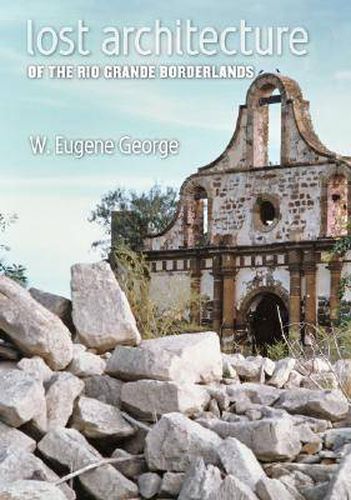Readings Newsletter
Become a Readings Member to make your shopping experience even easier.
Sign in or sign up for free!
You’re not far away from qualifying for FREE standard shipping within Australia
You’ve qualified for FREE standard shipping within Australia
The cart is loading…






Mexican settlers first came to the valley of the Rio Grande to establish their ranchos in the 1750s. Two centuries later the Great River, dammed in an international effort by the U.S. and Mexican governments to provide flood control and a more dependable water supply, inundated twelve settlements that had been built there. Under the waters of the new Falcon Reservoir lay homes, businesses, churches, and cemeteries abandoned by residents on both sides of the river when the floods of 1953 filled the 115,000-acre area two years ahead of schedule.The Smithsonian Institution, the National Park Service, and the University of Texas at Austin conducted an initial survey of the communities lost to the Falcon Reservoir, but these studies were never completed or fully reported. When architect W. Eugene George came to the area in the 1960s, he found a way of life waiting to be preserved in words, photographs, and drawings.Two subsequent recessions of the reservoir - in 1983-86 and again in 1996-98 - gave George new access to one of the settlements, Guerrero Viejo in Mexico. Unfortunately, the receding lake waters also made the village accessible to looters. George’s work, then, was crucial in documenting the indigenous architecture of these villages, both as it existed prior to the flooding and as it remained before it was despoiled by vandals’ hands. Lost Architecture of the Rio Grande Borderlands
combines George’s original 1975 Texas Historical Commission report with the information he gleaned during the two low-water periods. This handsome, extended photographic essay casts new light on the architecture and lives of the people of the Texas-Mexico borderlands.
$9.00 standard shipping within Australia
FREE standard shipping within Australia for orders over $100.00
Express & International shipping calculated at checkout
Mexican settlers first came to the valley of the Rio Grande to establish their ranchos in the 1750s. Two centuries later the Great River, dammed in an international effort by the U.S. and Mexican governments to provide flood control and a more dependable water supply, inundated twelve settlements that had been built there. Under the waters of the new Falcon Reservoir lay homes, businesses, churches, and cemeteries abandoned by residents on both sides of the river when the floods of 1953 filled the 115,000-acre area two years ahead of schedule.The Smithsonian Institution, the National Park Service, and the University of Texas at Austin conducted an initial survey of the communities lost to the Falcon Reservoir, but these studies were never completed or fully reported. When architect W. Eugene George came to the area in the 1960s, he found a way of life waiting to be preserved in words, photographs, and drawings.Two subsequent recessions of the reservoir - in 1983-86 and again in 1996-98 - gave George new access to one of the settlements, Guerrero Viejo in Mexico. Unfortunately, the receding lake waters also made the village accessible to looters. George’s work, then, was crucial in documenting the indigenous architecture of these villages, both as it existed prior to the flooding and as it remained before it was despoiled by vandals’ hands. Lost Architecture of the Rio Grande Borderlands
combines George’s original 1975 Texas Historical Commission report with the information he gleaned during the two low-water periods. This handsome, extended photographic essay casts new light on the architecture and lives of the people of the Texas-Mexico borderlands.